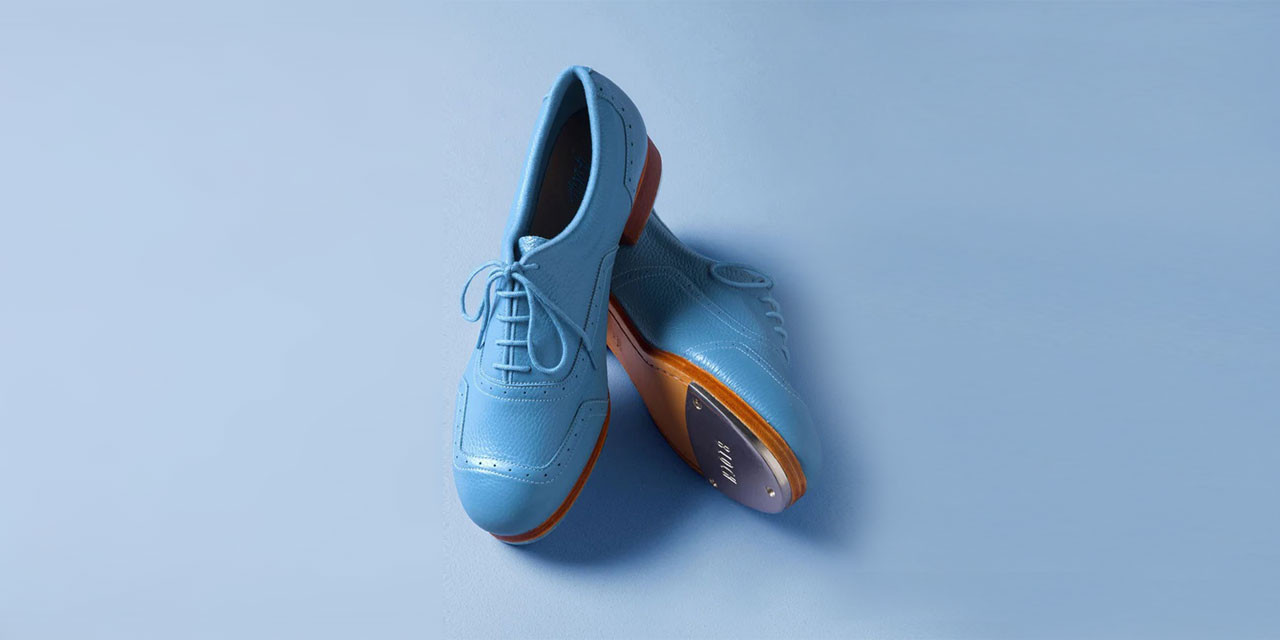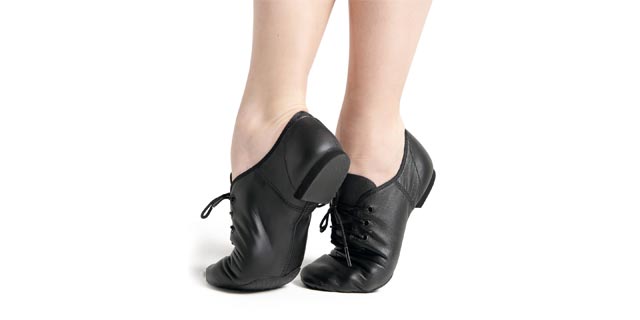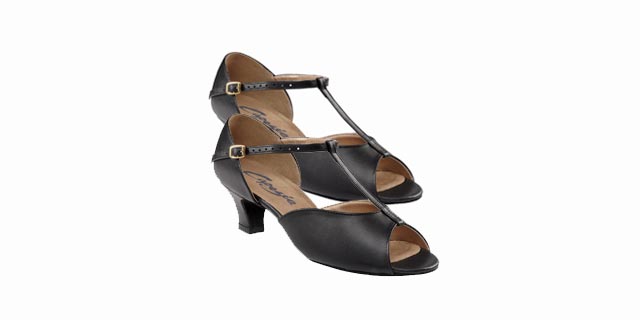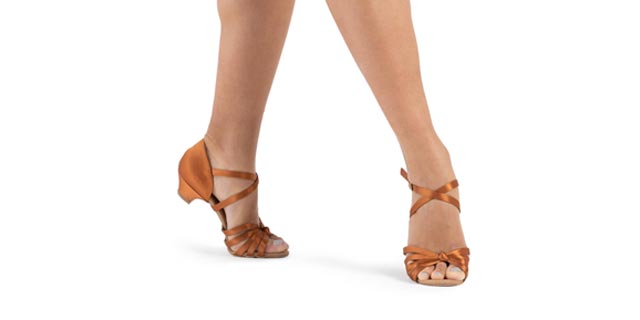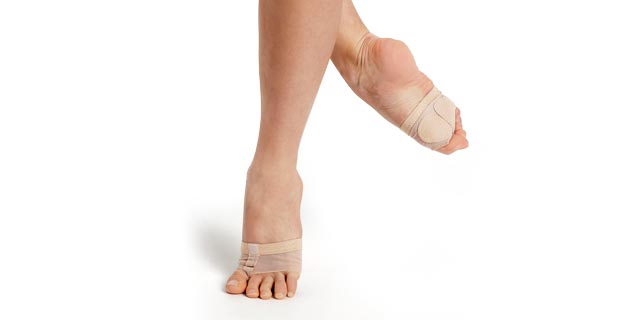Dance Shoes: What Are the Different Styles?
Let's Step Onto The Dance Floor
The right shoes can make all the difference in dance. Dance shoes are crucial no matter what style you're practising, whether performing pirouettes in ballet, leaping in jazz, or tapping away. They protect your feet but also enhance your performance in every way. Choosing the correct pair ensures comfort, support, and the ability to move with ease. This power of choice is in your hands, and we're here to guide you.
In our latest Dance Direct blog post, we will guide you through the various styles of dance shoes, helping you find the perfect match for your needs. We'll start with ballet shoes, the foundation of dance, then move on to jazz shoes, known for their versatility on stage, and finally, we'll explore the rhythmic world of tap shoes. Are you ready to step up your dance?
Let's begin by exploring the different types of dance shoes offered at Dane Direct, each with distinctive features. For your convenience, clicking on any of the photos below will direct you to the corresponding product page.
Ballet Shoes: The Foundation of Dance
Ballet shoes are footwear and the foundation of a dancer's artistry. From the first plié to breathtaking performances, the right ballet shoe supports every step. Two main types stand out: soft ballet shoes, also referred to as ballet flats and pointe shoes. Each has its role, materials, and significance in a dancer's journey. Pointe shoes offer the flexibility and support needed for this elegant dance form.
Soft Ballet Shoes Split-sole or Full-sole: Ideal for Beginners and Professionals
Ballet flats and soft ballet shoes are often a dancer's first pair. They are designed to provide flexibility and comfort and are made from various materials, such as leather, canvas, or satin.
- Leather: Offers durability and support. Great for young dancers whose feet are still growing.
- Canvas: Lightweight and breathable. Often chosen by more experienced dancers for practice.
- Satin: Primarily used for performances due to their sleek, elegant look.
Pointe Shoes: The Pinnacle of Ballet Mastery
Pointe shoes are a symbol of advanced ballet. They enable dancers to perform en pointe, balancing on the tips of their toes. This requires not just skill but also the perfect shoe.
The structure of a pointe shoe is complex:
- Box: The hard front part that supports the toes.
- Shank: The stiff sole that provides arch support.
- Vamp: Covers the top of the foot, offering additional support.
Fitting pointe shoes is an art in itself. A dancer needs a shoe that hugs their foot perfectly, providing support without restricting movement. The fitting process often involves trying multiple pairs and consulting with experienced fitters. A well-fitted pointe shoe ensures comfort and enhances performance, allowing the dancer to execute complex moves precisely and gracefully.
Pointe shoes are crucial for performing demanding ballet routines. They offer the strength needed to lift and glide effortlessly. The fitted pointe shoe can make or break an advanced dancer's performance.
Ballet shoes, whether soft or pointe, are essential tools of the trade. They support every jump, turn, and glide, making the dancers' movements look effortless. Understanding their role helps them appreciate the art and skill of ballet even more.
Jazz Shoes: Versatility on Stage
Split-sole jazz shoes have a unique design with separate soles at the heel and ball of the foot, allowing greater flexibility and arching. They are typically lighter than jazz sneakers, ideal for more fluid and intricate movements. Dancers benefit from the increased range of motion and enhanced ability to point their toes.
Jazz shoes are a staple in any dance wardrobe from beginners and seasoned professionals. They're known for their flexibility and style, allowing dancers to move seamlessly across the stage. Whether you're performing in a jazz routine, musical theatre, or even contemporary dance, jazz shoes offer the perfect blend of comfort and performance. Let's explore the two main types: lace-up and slip-on jazz shoes.
Lace-Up Jazz Shoes
Lace-up jazz shoes provide a tailored fit that dancers crave. The laces can be adjusted to conform to the shape of your feet, ensuring maximum support and flexibility. This feature is particularly beneficial during rigorous dance routines or performances requiring quick movement and direction changes.
Benefits include:
- Custom Fit: The laces allow you to tighten or loosen the shoe for a snug fit, reducing the risk of slipping or blisters.
- Enhanced Support: The structure of lace-up jazz shoes typically offers more ankle support, which is crucial for complex dance steps.
- Breathability: Many lace-up models include mesh panels or perforations, improving airflow and keeping your feet cool.
Lace-up jazz shoes might take longer, but the benefits outweigh the minor inconvenience. Their adaptability makes them a favourite among dancers who require precision and control.
Slip-On Jazz Shoes
Slip-on jazz shoes are all about convenience and comfort. These shoes are easy to wear and offer a sleek, streamlined look to their elastic panels. Slip-on jazz shoes fit snugly while allowing for quick changes between dance routines.
Key advantages:
- Ease of Use: Slip-on shoes save you time, making them ideal for quick costume changes or fast-paced dance environments.
- Flexibility: The lack of laces means the entire shoe can stretch and flex, providing excellent freedom of movement.
- Comfort: Many slip-on models come with cushioned insoles and arches, offering all-day comfort.
Slip-on jazz shoes are perfect for dancers prioritising speed and ease without compromising performance. They're beneficial in settings where dancers must switch styles rapidly and efficiently.
Whether lace-up or slip-on, jazz shoes are versatile and essential to any dancer's ensemble. They offer the right combination of support, comfort, and flexibility, making every dance step look effortless. Remember these features as you choose the perfect jazz shoe for your performance needs.
Tap Shoes: Rhythm and Sound
Tap shoes are the heartbeat of tap dancing, turning every step into a percussion instrument. They bring an exciting rhythm to the dance form, making every performance an auditory treat. There are two main types: flat tap shoes and heeled tap shoes. Let's explore the different styles and innovations in tap shoes.
Traditional Tap Shoes
Traditional tap shoes are crafted to produce clear and crisp sounds, essential for classic tap routines. They are usually made of sturdy leather, which ensures durability and comfort.
Key features include:
- Metal taps: Attached to the toe and heel, these metal pieces create a distinctive tap sound.
- Stiff sole: Often made of wood or leather, providing a solid base that enhances the sound.
- Low heel: This helps balance and control, which is vital for intricate tap steps.
Flat Tap Shoes
Flat tap shoes have a low heel; they are usually the first choice for beginners and young dancers. They have a low heel and a secure fit, offering comfort and stability. The flat heel helps new dancers maintain balance while learning basic tap steps and building rhythm.
These shoes are not just for making noise; they also play a critical role in the dancer's performance. The weight and build of the traditional tap shoe help tap dancers maintain balance and control, allowing for fast, precise footwork that is essential in this dance form. Traditional tap shoes are perfect for styles like Broadway tap and other classic routines, where clarity of sound and sharp, clean steps are paramount.
Modern Tap Shoes
Modern tap shoes have seen several innovative changes that enhance the dancer's experience and performance. These innovations focus on better sound quality, comfort, and versatility.
Some notable modern features include:
- Split sole: This design allows for greater flexibility and movement, allowing dancers to perform more dynamic routines.
- Cushioned insoles: For added comfort, reducing strain on the dancer's feet during long rehearsals and performances.
- Adjustable taps: These can be tightened or loosened to adjust the sound, providing more control over the rhythm and tone.
Heeled Tap Shoes
Heeled tap shoes, commonly called Cuban heels, have a higher heel, often around one to two inches, and are typically worn by more advanced dancers. The heel creates a different sound and dynamic in dance routines, adding elegance and flair to performances. They require better balance and control compared to flat tap shoes.
Modern tap shoes also incorporate various materials to improve performance. For instance, some boots use synthetic uppers for lightweight comfort, while others integrate advanced materials to enhance durability and sound quality. These innovations make modern tap shoes suitable for different tap styles, from high-energy rhythmic tap to more experimental and contemporary performances.
In summary, whether you choose traditional or modern tap shoes, each type has unique advantages that suit different dance styles and preferences. The choice depends on the sound, comfort, and flexibility you seek, which is crucial in delivering a captivating tap performance.
Character Shoes: Expressing Personality
When it comes to theatrical dance, character shoes hold a special place. These shoes aren't just about function; they express personality and add flair to a performance. Unlike other dance shoes, character shoes are designed to stand out while providing the support dancers need for various movements. Let's break down what makes these shoes unique.
Design and Functionality
Character shoes are built to enhance the dancer's performance while maintaining a visually appealing design. Here are the typical characteristics that set them apart:
Heel Height: Character shoes usually feature a modest heel, ranging from 1 to 3 inches. The heel height provides the necessary lift and elegance without sacrificing stability. It gives dancers extra flair, making each step look graceful and confident.
Material: These shoes are often crafted from durable materials like leather or synthetic alternatives. The upper part is usually smooth, providing a sleek look, while the sole is made of a flexible material for unrestricted movement. This combination ensures that the shoes are both stylish and functional.
Durability and Comfort: Character shoes are designed with the wear and tear of frequent use in mind. The soles are sturdy enough to withstand rigorous rehearsals and performances, while the insides are cushioned to keep the feet comfortable.
Versatility: One of the standout features of character shoes is their versatility. They can be used for various dance styles, including musical theatre, ballroom, and folk dance, making them a staple in any dancer's wardrobe.
Appearance: Character shoes often come in classic colours like black, beige, or white, allowing them to blend seamlessly with various costumes. Some even feature embellishments like buckles or straps for added flair.
In summary, character shoes are not just functional footwear but are crucial in expressing a dancer's personality and enhancing performance. With the right pair, dancers can step into their roles with confidence and charisma.
Ballroom Dance Shoes
We also refer to them as social shoes or ballroom dance shoes. Depending on the type of dance, they come in various styles, including Latin dance shoes and standard ballroom shoes.
Latin Dance Shoes
Latin dance shoes feature a higher heel, one to three inches, and an open-toe design. They are crafted to allow quick, fluid motions and offer a snug fit for better foot control. These shoes are ideal for dances like the cha-cha, samba, and rumba, where intricate footwork and precise movements are essential.
Standard Ballroom Shoes
Standard ballroom shoes have a lower heel and open toe or closed toe, offering better support and comfort for dances like the waltz, tango, and foxtrot. They typically have a suede sole for smooth sliding on the dance floor, adding to the dancer’s grace and style. Their construction ensures maximum comfort during long routines and competitions.
Standard Ballroom Shoes
Standard ballroom shoes have a lower heel and open or closed toe, offering better support and comfort for dances like the waltz, tango, and foxtrot. They typically have a suede sole for smooth sliding on the dance floor, adding to the dancer's grace and style. Their construction ensures maximum comfort during long routines and competitions.
Contemporary and Lyrical Footwear: Fluidity in Motion
The contemporary and lyrical dance world demands shoes for freedom of movement and expression. Contemporary and lyrical footwear offers comfort, protection, and flexibility to support dancers' artistry.
Foot Undies and Half-Soles Shoes
Regarding contemporary and lyrical dance, foot undies and half-soles, also known as half-turning shoes or pirouettes,are the unsung heroes. These shoes cover only the ball of the foot and some of the toes, exposing the heel and arch. But why are they so popular among dancers?
For starters, here are the benefits of using foot undies and half-soles:
- Enhanced Flexibility: Dancers can quickly point and flex their feet without restricting an entire shoe. This freedom allows for more expressive movements and seamless transitions.
- Improved Traction: The pads on foot undies and half-soles provide the proper grip, reducing slips and giving dancers better control over their performances.
- Barely There Feel: These shoes are designed to feel as close to dancing barefoot. Dancers feel like they are floating across the stage while still having the necessary protection.
Reduced Pressure and Stress: Unlike full-soled shoes, foot undies and half-soles lessen the pressure on the arch and heel. This allows for more extended periods of dancing without discomfort or injury.
Imagine performing an intricate routine while wearing bulky shoes; achieving the same fluidity and grace would be nearly impossible. That's where foot undies and half-soles step in, offering a second-skin experience that enhances every pirouette, leap, and slide.
So, the next time you watch a contemporary or lyrical dance performance, pay attention to the dancers' feet. They are likely wearing tiny, robust shoes that help them convey emotion and storytelling through movement.
Whether you are an aspiring dancer or a seasoned pro, switching to foot undies and half-soles can help you achieve the ideal blend of artistic expression and functional support.
Dance Sneakers: Comfort Meets Performance
Dance sneakers have revolutionised the dance world. They blend the comfort of your favourite trainers with the performance needs of various dance genres. Whether you're a hip-hop enthusiast or a jazz dancer, dance sneakers are your new best friend.
Benefits of Dance Sneakers
Dance sneakers are gaining popularity among dancers for a good reason. Here's why you should consider getting a pair:
Comfort
- Imagine dancing for hours without feeling like you've walked on hot coals. Dance sneakers are designed to keep your feet comfortable.
- They feature padded insoles and cushioned heels that absorb impact, making long rehearsals more bearable.
- The breathable materials in dance sneakers ensure your feet stay cool and dry, even during intense practice sessions.
Support
- With dance sneakers, your feet will feel supported. The arch support in these shoes is specifically designed to handle the twists and turns of dance moves.
- The ankle support helps prevent injuries, giving you the confidence to push your limits.
- The soles are flexible yet sturdy, allowing you to pivot and spin easily while providing excellent grounding.
Style
- Dance sneakers come in various trendy designs, so you don't have to sacrifice your fashion sense for functionality.
- They are available in numerous colours and patterns, making matching them with your dance outfits easy.
- Some even incorporate glitter and metallic accents, ensuring you stand out on the dance floor.
In summary, dance sneakers are a versatile and stylish option for dancers of all levels. They offer unparalleled comfort and support, allowing you to perform at your best without compromising style. Whether performing a high-energy hip-hop routine or a smooth jazz number, dance sneakers have you covered.
Dance Shoes: What Are the Different Styles?
Finding the perfect pair of dance shoes is crucial for any dancer, whether you're a beginner or a seasoned professional. The right pair enhances your performance and protects you from injuries. Here's a guide on choosing the best dance shoes that suit your style and needs.
Fitting and Comfort
When it comes to dance shoes, fitting and comfort are paramount. An ill-fitting shoe can lead to blisters, foot pain, and even long-term injury. Imagine trying to perform a complicated pirouette or execute precise footwork while your shoes are pinching or sliding off. Not ideal, right?
Tips for Ensuring a Proper Fit:
- Measure Your Feet: Your dance shoe size can vary like regular shoes. Measure both feet and buy shoes for the larger foot to ensure a fit.
- Try Them On: When trying on shoes, wear the socks or tights you usually dance in. Walk around, perform a few dance moves, and see how they feel.
- Check for Pinching and Gaping: Ensure no tight spots pinch your toes or heels. There should also be no gaps, especially around the arch of your foot.
- Consider the Material: Leather shoes tend to stretch and conform to your foot over time, whereas synthetic materials may not. This can affect long-term comfort.
Importance of Comfort:
- Performance: Comfortable shoes allow you to focus on your dance moves rather than your aching feet. Whether you're dancing ballet, jazz, or tap, comfort is key to executing precise movements.
- Injury Prevention: Properly fitting shoes provide the support you need to prevent injuries such as sprains and strains. They also help maintain the health of your feet, which is vital for any dancer.
- Confidence Boost: When your shoes fit well and feel comfortable, you're more likely to dance with confidence. Imagine the difference between dancing freely and worrying about your shoes slipping off!
Selecting the right dance shoe involves understanding your foot's needs and finding a shoe that meets the demands of your dance style. From the snug fit of ballet slippers to the supportive sole of jazz shoes, comfort and fit can't be compromised. Follow these tips, and you'll be on your way to a flawless performance every time you step onto the dance floor.
Final Dance
Understanding different dance shoe styles is crucial for any dancer's success. The right shoe enhances performance, provides proper support and adds to the dance experience. Whether you're a beginner or a seasoned professional, choosing the appropriate footwear can make all the difference in your journey.
Explore the options available. From ballet flats to jazz shoes, each style offers unique benefits. Invest in quality, choose the perfect fit, and watch your dance skills soar. Your feet deserve the best, and so does your passion for dance.
If you still have questions, can you read this edition from Dance Direct? Feel free to contact us or visit our dance store nearby at Maroubra.


 USD (USD)
USD (USD)
 EUR (EUR)
EUR (EUR)
 NZD (NZD)
NZD (NZD)
 Canadian dollar (CAD)
Canadian dollar (CAD)
 British pound (GBP)
British pound (GBP)
